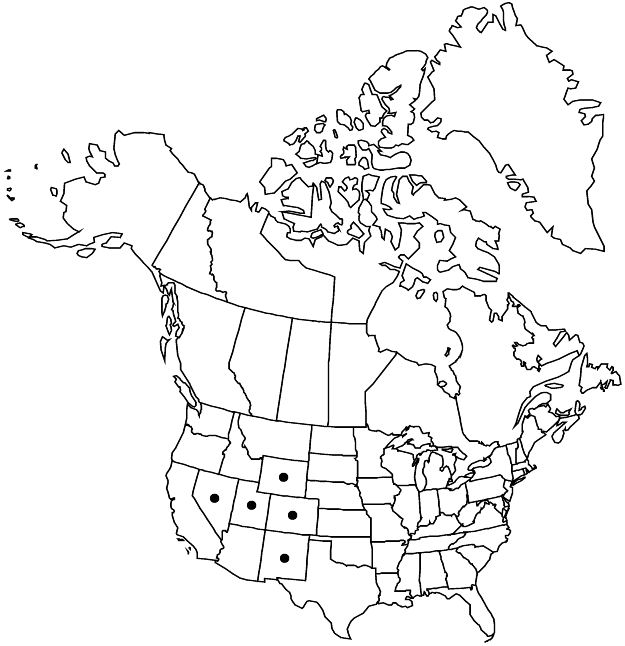Sidalcea candida
Mem. Amer. Acad. Arts, n. s. 4: 24. 1849.
Herbs, perennial, 0.3–1 m, ± glaucous, with rhizomes wide-spreading, compact to elongate, 5 mm diam. Stems single, clustered in older plants, erect, sometimes branched distally, solid, glabrous or moderately hirsute, hairs retrorse, simple proximally, becoming ± finely stellate-hairy distally. Leaves basal and mostly cauline, not evenly arrayed; stipules deciduous, ovate, 10 × 2–2.5 mm; petiole (4–)6–18 cm, usually 1/2 times to as long as blade; petals often not overlapping, white to pale pinkish, drying yellowish, 10–20 mm; staminal column 6–9 mm, hairy; anthers bluish pink; stigmas 6–9. Schizocarps 5–7 mm diam.; mericarps 6–9, 3–5.5 mm, sides smooth or slightly reticulate-veined, back less so, not pitted, top minutely hairy, mucro 0.5–0.8 mm. Seeds 2 mm. 2n = 20.
Phenology: Flowering (May–)Jun–Aug(–Sep).
Habitat: Moist stream banks and meadows, mountains
Elevation: (1400–)2000–3200 m
Distribution

Colo., Nev., N.Mex., Utah, Wyo.
Discussion
Sidalcea candida is one of the more eastern species of Sidalcea (along with S. neomexicana) and is also one of the more easily distinguished because of its relatively large, crowded flowers with white petals, deep, wide-spreading rhizomes, pinkish-blue anthers, and nearly glabrous stems and leaves. It has become a popular garden plant. Hitchcock recognized two varieties based on calyx indument, var. candida with the calyx uniformly hairy, and var. glabrata with the calyx much more hairy at the base than on the lobes. Cockerell distinguished plants with somewhat pink petals as var. tincta. These differences do not appear to be taxonomically significant, and the varieties lack geographic coherence.
Selected References
None.